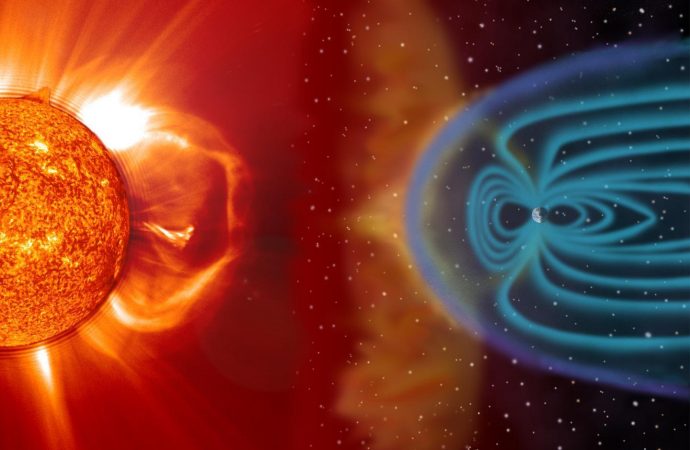Hot gases are surging from a hole in the Sun’s atmosphere, sending powerful solar winds full of charged particles through space and towards our planet.
These winds may build to a minor geomagnetic storm between 2 p.m. ET and 5 p.m. ET on Tuesday, the National Oceanic and Atmospheric Administration (NOAA) predicts. But what is a geomagnetic storm, and what does it mean for people on Earth?
Geomagnetic storms are disturbances of our planet’s magnetosphere—a bubble of space around Earth that’s influenced by its magnetic field. Solar wind can interfere with this bubble as energy transfers from the wind to the magnetosphere.
“The magnetosphere can capture some of the particles escaping from the sun, storing them and energy in the space around the Earth,” University College London space plasma physicist Colin Forsyth told Newsweek. ”When the fast solar wind from a coronal hole hits the Earth, it compresses the magnetosphere and adds even more energy into it.”
This powerful space weather can morph the magnetosphere’s currents and distort its fields.
The Sun is a hot swirling mess of searing gases, which sometimes spurts out billions of tons of charged particles in coronal mass ejections. A hole in the Suns’ corona—the outermost layer of its atmosphere—is one source of solar wind.
Tuesday’s expected storm is the result of gases seeping out of a coronal hole and moving towards our planet at high speed. Data from a NASA spacecraft suggests the wind is moving at more than 375 miles per second, Spaceweather.com reports.
But don’t worry, Earth’s magnetic field will stop most of the charged particles carried by the solar wind from reaching our planet.
Satellites orbiting Earth, however, may be battered with solar particles. “When the fast solar wind from a coronal hole hits the Earth, it compresses the magnetosphere and adds even more energy into it,” Forsyth said. “This can enhance the space radiation environment, posing a risk to spacecraft orbiting high above the Earth.”
Magnetic storms can cause problems with GPS, cell phones and satellite TV. Extreme space weather can affect satellites’ orientation, for example, and make it hard for them to communicate with Earth, the NOAA states. But because Tuesday’s storm is relatively minor, it will probably only have a small impact on satellites.
The low-level geomagnetic storm may also cause “weak power grid fluctuations,” but it’s unlikely to result in the widespread blackouts more active space weather can create.
Beyond human technology, geomagnetic storms can have strange effects on nature. Even minor storms can interfere with the normal migratory patterns of some animals. If you live in a higher latitude region, like Maine or Michigan in the U.S., you may catch a glimpse of the northern lights.
These small storms are actually quite common, occuring on 900 days every 11 years of the solar cycle, Forsyth said. “These pass without most people even being aware that they are happening.”
Although the NOAA expects the storm to peak Tuesday afternoon, our geomagnetic field is set to remain unsettled until at least Thursday.
Source: Newsweek



































Leave a Comment
You must be logged in to post a comment.